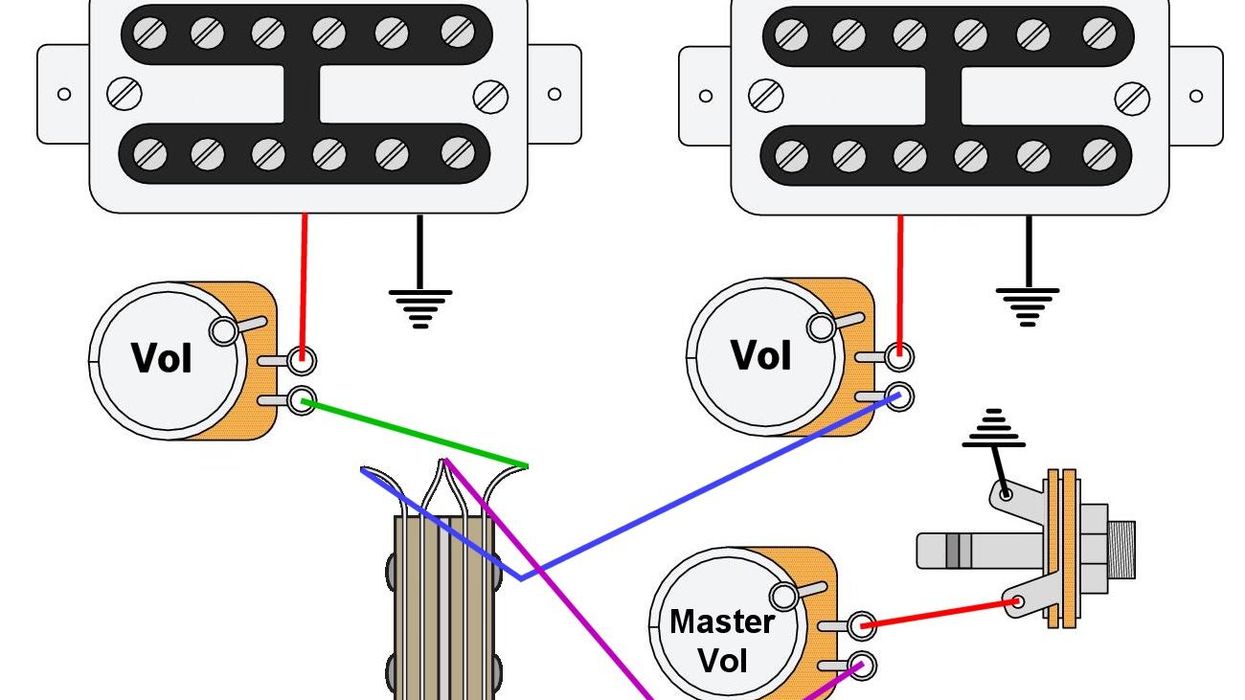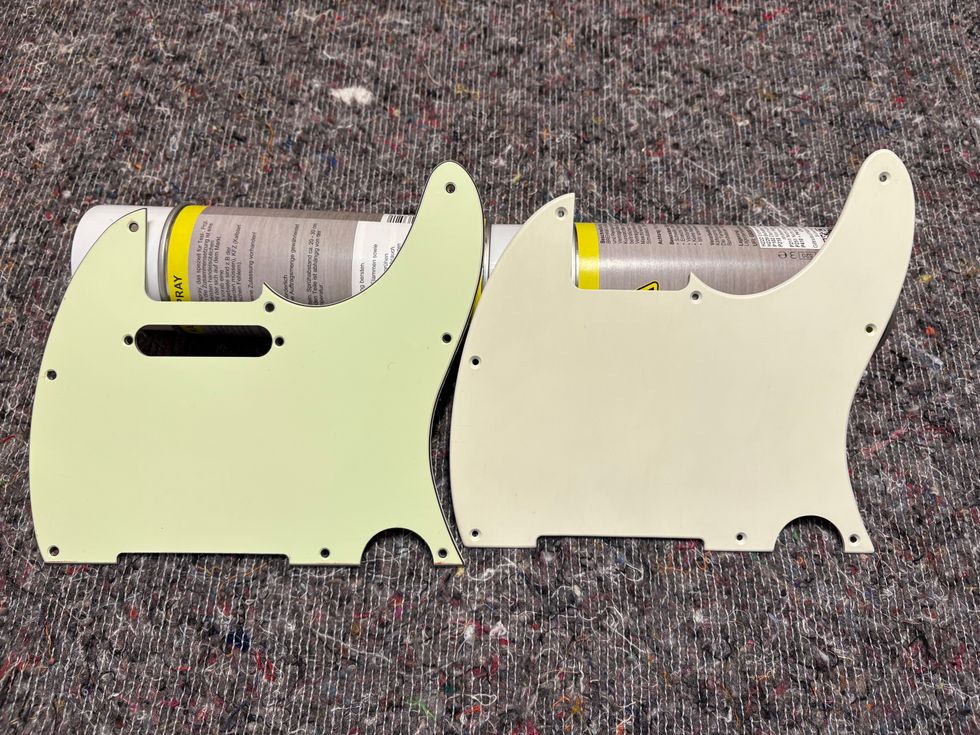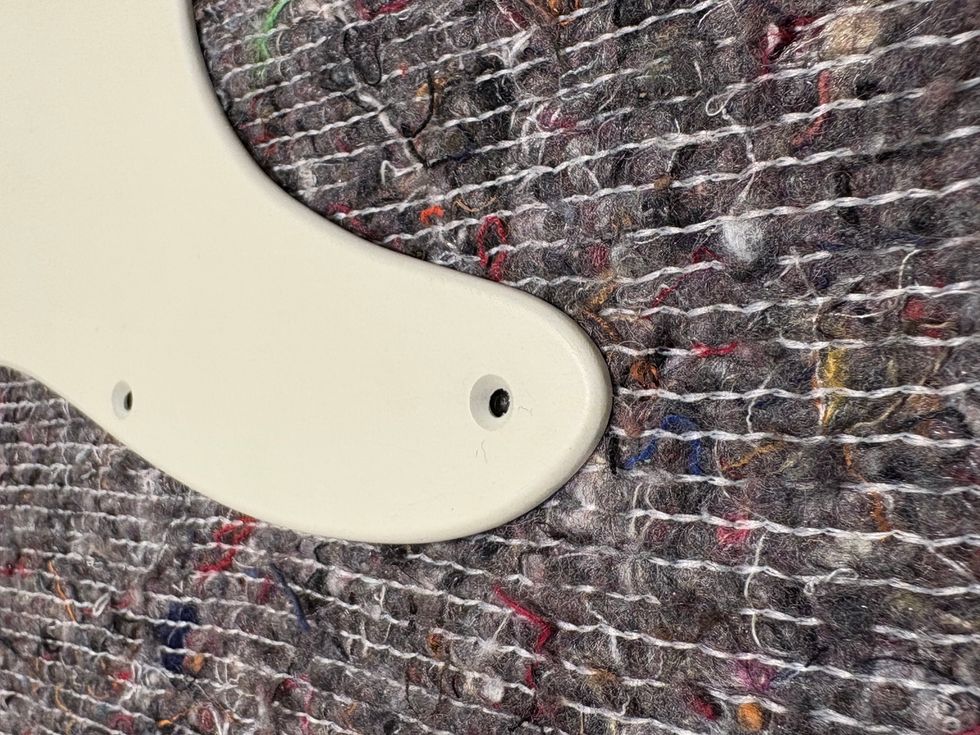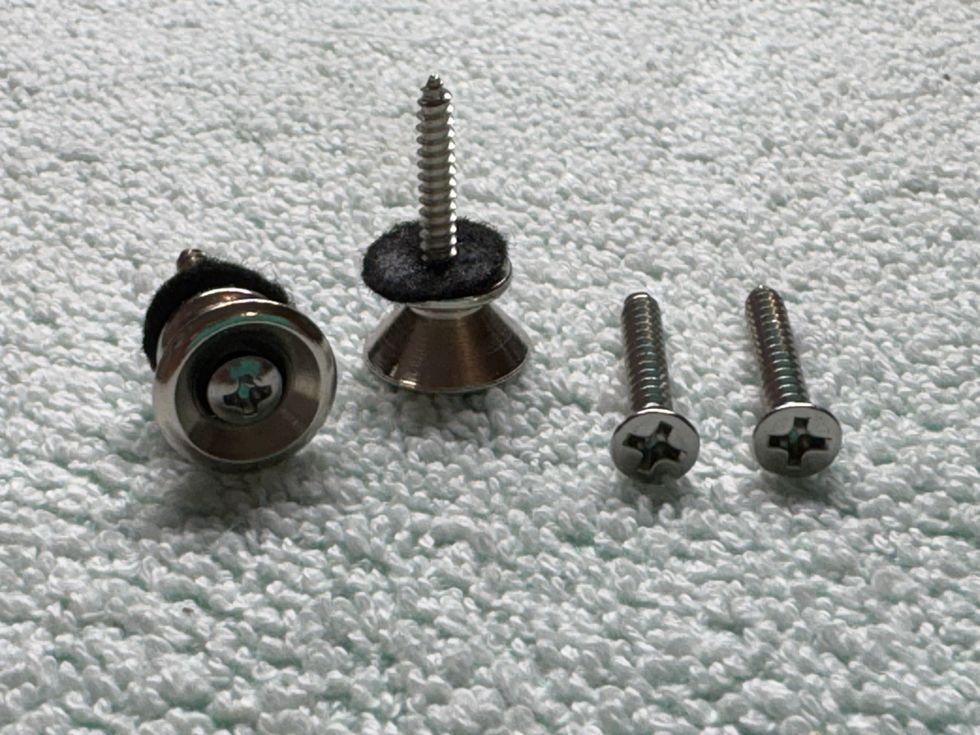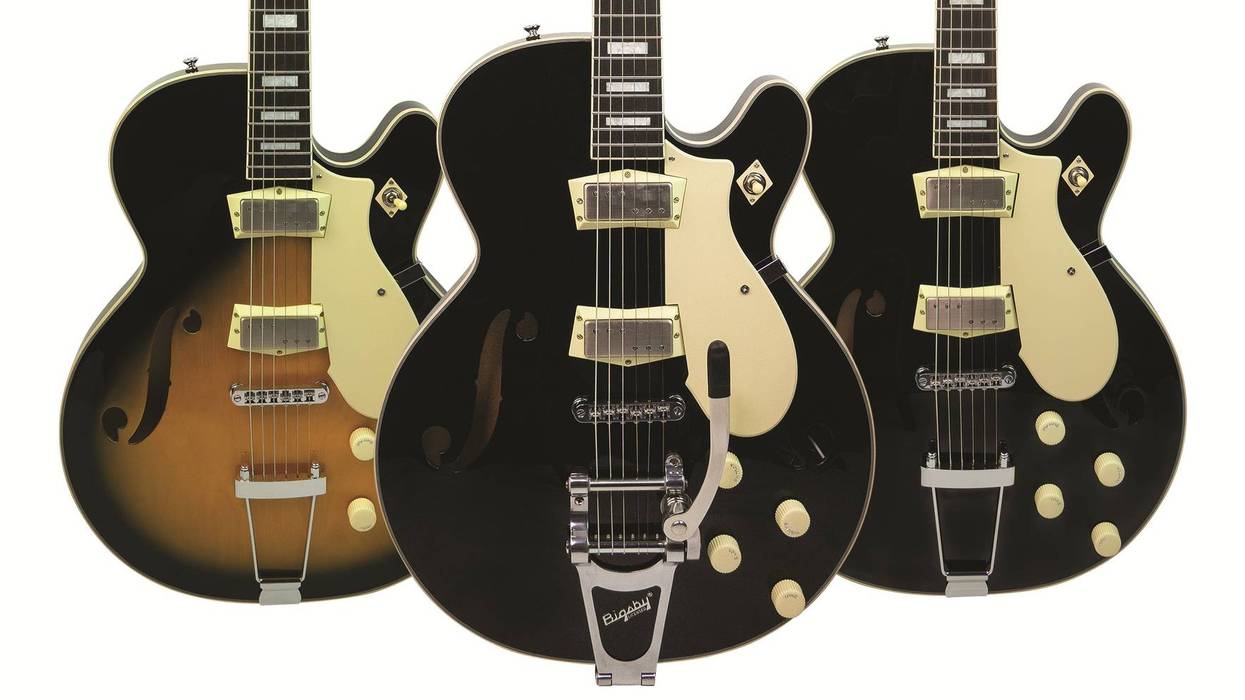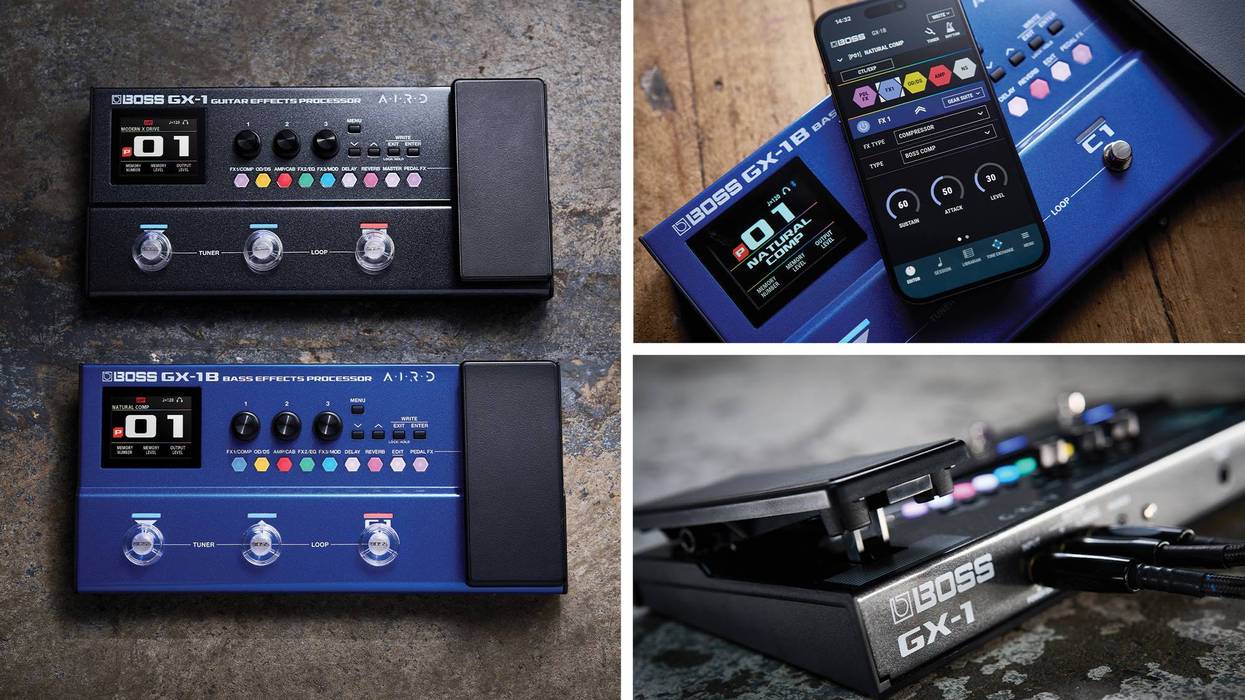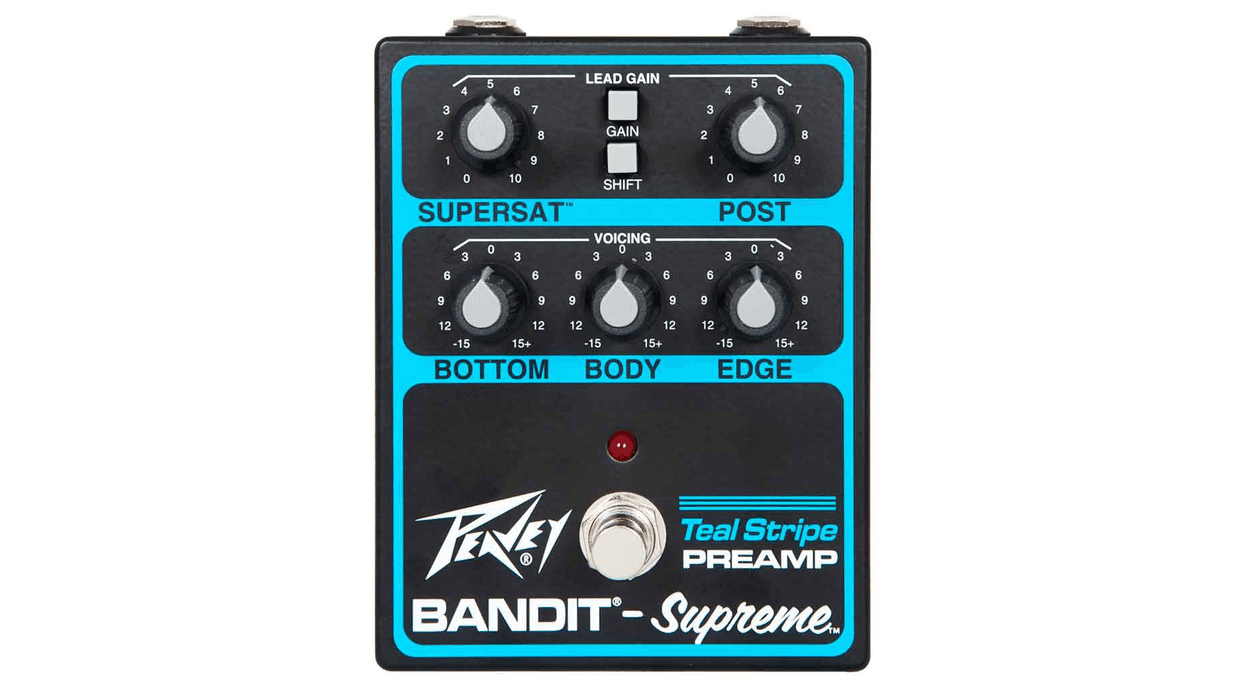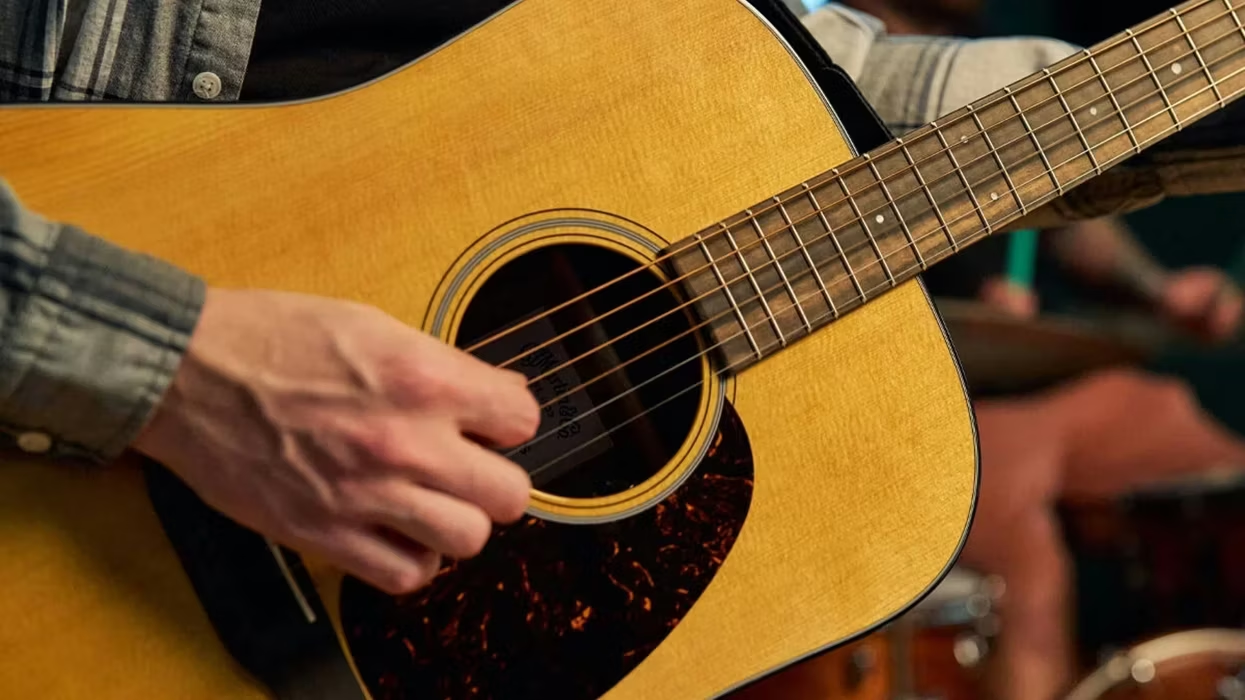Welcome back to Mod Garage. Before we start, some good news! After finishing the relic’ing series, I was able to raise $650 from our Harley Benton guinea-pig guitar in an auction. The money went to our local animal shelter for cats and dogs, to help pay some vet bills.
This month, we’ll take a closer look at the typical wiring you can find in almost every Gretsch guitar. Since 2002, the Gretsch guitar company has been a division of Fender Musical Instruments Corp. But the company has a long history. It all started in 1883 in Brooklyn, New York, when a German immigrant from the town of Mannheim named Friedrich Gretsch started his own shop to make banjos and drums. Sadly, Gretsch died in 1895 at the untimely age of 39 during a visit in Hamburg, Germany. His 15-year-old son Fred (the Americanized version of “Friedrich”) had to run the company. In the 1930s, Gretsch started making guitars and the company had their first heyday. Like many companies during WWII, Gretsch had to stop production of instruments to help in the armament industry. After the war, the two sons of Fred Gretsch (Fred Jr. and William) took their father’s place and started making instruments again. In 1948, the Gretsch Broadkaster drum set was their best-selling item, and the start of another story with a certain Leo Fender offering an electric guitar with the same name, only spelled slightly different.
With the emergence of rockabilly and rock ’n’ roll in the ’50s, Gretsch guitars became popular in the hands of players like Chet Atkins, Eddie Cochran, Cliff Gallup, Duane Eddy, and even Elvis Presley. Later in the game, George Harrison, Brian Setzer, Malcolm Young, and many more became popular Gretsch players.
Sidenote: In 1999, Gretsch took over the Bigsby company, which was their exclusive hardware supplier since 1951. Instruments featuring a Bigsby tailpiece, like the White Falcon, Country Gentleman, Nashville, Duo Jet, etc. are real guitar icons today.
The wiring concept of Gretsch guitars is unique and noticeably different from that of most other companies, offering a volume control for each pickup along with a master volume control. This wiring is combined with a pickup-selector switch and a tone control in basically three versions:
“The interesting part is the arrangement of the volume controls—it’s been said that this was a suggestion from Chet Atkins.”
1. Master tone control (with or without no-load pot)
This is what we know from a lot of other guitars sporting a master tone control for all pickups: Sometimes a no-load pot is used to get rid of the pot’s load when it’s fully opened. Gretsch typically uses 500k audio pots and .022 µF tone caps.
2. Two-way tone switch
There is no tone pot, but there’s a switch that activates two different tone caps as a kind of pre-set tone. Gretsch typically uses 500k audio pots, as well as a .012 μF and .0039 μF (3900 pF) tone cap on the tone switch.
3. No tone control at all
It is what it says: There is no tone control at all with 500k audio pots for the volume controls.
Use whatever tone cap you like best. The 500k choice for the tone pot is a good working solution in a passive guitar circuit. On my own Gretsch 6120, I decided to use 3300 pF and 6800 pF caps on the tone switch, and it works fine for me.
The interesting part is the arrangement of the volume controls—it’s been said that this was a suggestion from Chet Atkins. Having a volume control for each pickup is common on other guitars, like on a typical Les Paul. But the combination with a master volume control is rare … and the source of some unwanted effects. Let’s have a look at the typical Gretsch volume wiring scheme (Fig. 1). I decided to use the one without tone control because this is the basic wiring and can be found on the 6122 Country Gentleman. The wirings with a tone control are identical regarding the volume controls.
This arrangement in a passive guitar system will result in a loss of tone because of two reasons:
1. The three volume pots will drain a good portion of high-end to ground when rolling back the volume, which is the nature of the passive beast.
2. Long shielded wire runs are used inside the hollowbody Gretsch guitars, adding capacitance to the system, resulting in even more high-end loss.
Even with the pickup height adjusted correctly, the loss in high-end is clearly noticeable, so let’s see what can be done. For some players, this is no problem at all and part of the tone. If you’re happy with the way your guitar sounds, there’s no reason to change the system. If you want a clearer tone with more high-end definition, you have the following options.
If you don’t want to convert your Gretsch guitar into an active system to get rid of the high-end loss, you’ll need to compromise by adding a treble-bleed network to the volume pots. We talked about this sometime ago in detail [“Mod Garage: Deep Diving into Treble-Bleed Networks”].
Selecting the right treble-bleed network is a matter of choice. What works for me might not work for you. Maybe you like some more high-end when rolling back the volume than others or vice versa. With the typical Gretsch Filter’Tron pickups, I like a 470 pF cap with a 150k resistor in parallel. Try this as a starting point and see if you like it. In theory, you’ll need a treble-bleed network on all three volume controls, which gives you a wide control regarding sound. In my own 6120, I use different treble-bleed networks because I want more high end from the neck pickup compared to the bridge pickup. I’ve also seen configurations with a treble-bleed network on the two volume controls for the pickups and without one on the master volume control. Personally, I don’t like this configuration. Using one on the master volume and not on the two controls for the pickups will have a better result.
You see, it’s a wide field of experimentation, but it’s worth the effort. While you’re in there, I recommend changing the 500k audio volume pots for 250k audio pots to benefit from the much better taper in a passive system. The difference in high end is minimal (if audible at all), and you can compensate easily with the treble-bleed network by choosing slightly higher values. I did this in my 6120 and the difference was huge.
“Don’t underestimate the time you’ll need to get the electronics of a hollowbody guitar out and back in. Even on a good and clear day, you can’t do this within 30 minutes, so don’t hurry.”
Don’t underestimate the time you’ll need to get the electronics of a hollowbody guitar out and back in. Even on a good and clear day, you can’t do this within 30 minutes, so don’t hurry. If you’ve ever changed the electronics inside such a guitar, you know what I mean.
Gretsch uses shielded wires inside, but sadly, the quality is only average. The wire has a high capacitance, and, especially inside big hollowbodies, you can find up to 2.5 meters (about 8.2 feet) of it, which is a real sound killer on its own. The shorter the wire, the less capacitance it will add to the circuit, so you should optimize the length of the wire wherever possible. If you want to stick with shielded wire, you should use a high-quality one with a low capacitance. I like to use the .155-diameter George L’s high-end wire for this. It’s very thin, with a capacitance of only 19 pF per foot, which is unbeatable ... but still affordable.
In comparison, I measured 46 pF per foot with the original wire from the factory. The before/after effect will be like lifting a blanket from the amp. But you can also use non-shielded wire if you’re not concerned about shielding. I replaced all wires in my 6120 with the George L’s .155-diameter cable and was able to reduce the original length of the wires to 50 percent, which means reducing additional capacitance to the circuit noticeably.
As you can see, tone is not set in stone, and there are ways to enhance your Gretsch wiring. Next month, we’ll dissect the Scott Henderson Stratocaster wiring, so stay tuned.
As you can see, tone is not set in stone, and there are ways to enhance your Gretsch wiring. Next month, we’ll dissect the Scott Henderson Stratocaster wiring, so stay tuned.
Until then ... keep on modding!


